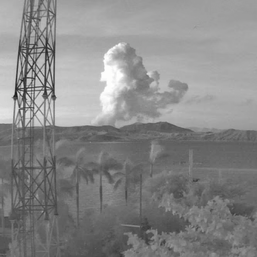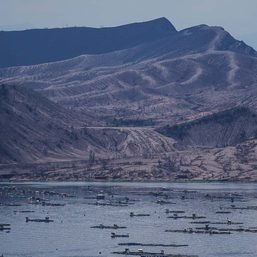SUMMARY
This is AI generated summarization, which may have errors. For context, always refer to the full article.

MANILA, Philippines – Speed kills. This is true on the road as well as online.
In the case of the Philippines, it is the lack of speed online that keeps the country hungry enough to be a part of online space. Speed and the availability (and affordability) of broadband connections continue to plague a country that desires connectivity with friends, relatives and the world in general.
Thomas L. Friedman, a highly regarded columnist for the New York Times calls our world today a “hyperconnected world,” a world that exceeds any previous notion of being a part of each other. Is the Philippines ready for this new world?
Hampered by a topographically challenging landscape of 7,100 islands, a controversial National Broadband Network project, a lack of competition in the industry, and various equally pressing issues that beg for resources from limited budgets, the Philippines has its work cut out for it.
Enter Akamai
Akamai is a leading global service provider for accelerating content and business processes online. It also publishes a well-regarded quarterly, “State of the Internet” report. In the latest report it published for the 3rd quarter of 2011, we get a glimpse of how the Philippines fares compared to other countries as far as broadband speed is concerned.
Based on one trillion content requests worldwide, as well as a threshold of 25,000 unique IP addresses for each country from July to September 2011, the report reveals a number of data points for various countries and regions.
Global Average Connection speeds have continued to rise. The 2011 report indicates a 2.7Mbps average, which was a 4.5% increase from the previous quarter and a 39% increase year on year. South Korea continues to lead the world with a 16.7 Mbps average followed by Hong Kong (10.5Mbps) and Japan (8.9Mbps). The balance of the Top 10 countries in the world for average measured connection speeds is from Europe. The US ranks No. 13.
For peak speeds, South Korea leads the world followed by Japan. The city of Taejon has a mouth-watering 58.8 peak speed followed by another South Korean city (Taegu) with 57.2Mbps. Japan’s Shimotsuma recorded a 55.4Mbps peak speed followed by Kanagawa with 54.5 Mbps.
How the Philippines fares
The Philippines ranks 101st among all countries surveyed for average connection speed. For the 3rd quarter report, the Philippines recorded a 1.1Mbps average connection speed and is ranked 12th among 13 countries classified under the Asia Pacific table.
Note that a 1.1Mbps speed is below the 2Mbps “broadband” threshold. It was ahead only of India which reported a 0.9 Mbps. The Philippines was also only one of 4 countries in the region that recorded a quarter to quarter drop in connections speeds – 4.7% down from the 2nd quarter of 2011. (see Table 1)

No Philippine city made it to the list of “Top Asia Pacific Cities by Speed.”
In the table for Average Peak Connection Speeds, the Philippines ranked better both globally and within the Asia Pacific region but it was also the only country that registered a decline in peak speeds in the region. The Philippines ranked 87th in the world for peak speeds with 8.3Mbps, which was a 12% increase year on year; but the country was down 0.2% versus the previous quarter. It also jumped to the 11th spot among the Asia Pacific countries. (Table 2).

Unfortunately, the Philippines was also only one of three countries (together with India and China), that recorded average peak speeds below 10Mbps.
Given the aggressive rollout of the various providers of broadband in the country, it comes as no surprise that there was a significant increase in broadband adoption for the Philippines. The country however (while included in this metric) did not register the required 25,000 unique IP addresses for the report.
For High Broadband Connectivity, more Filipinos are now enjoying speeds above 5Mbps. The country registered a 79% increase year on year with a 15% increase from the 2nd quarter. Unfortunately, this comes from a very low base of people that enjoyed the high speeds to begin with, as evidenced by the fact that the country did not register 25,000 unique IP addresses. As such, it remains unranked globally and regionally. (Table 3)

For connections above 2Mbps, only 9.3% of connections were classified as above 2Mbps which was 0.8% down from the previous quarter. This was, however a 32% increase from the same quarter in 2010. (Table 4)

The gap between countries is significant. And while Malaysia, China and India are in the bottom half of the table, you will see that the year-on-year growth is way above that of the Philippines which could mean that the Philippines will be left behind in take up over the next two reports.
Finally, we look at narrowband connections – homes and connections below 256kbps. As countries roll out broadband, it is but natural that narrowband connections decline. While that is true for most, countries that have low broadband take up with populations only now becoming online savvy are resorting low speeds to get started.
This may also be a consequence of the price of connectivity driven by local competition or regulatory pricing schemes. Filipinos with less than 256kbps speeds increased by 7.8% from the previous quarter but overall, less Filipinos had these low speeds. The explanation could be that while more homes have migrated to higher speeds, there are also newcomers that have opted for these low speed entry packages. (Table 5)

Over the next few weeks, Rappler will take a look at the state of the Internet for the Philippines bringing together various reports that help us understand this new, hyperconnected world.
Are we ready? How do we rank? And why does this matter to our future? – Rappler.com
Click on the links below for more.
Add a comment
How does this make you feel?





There are no comments yet. Add your comment to start the conversation.